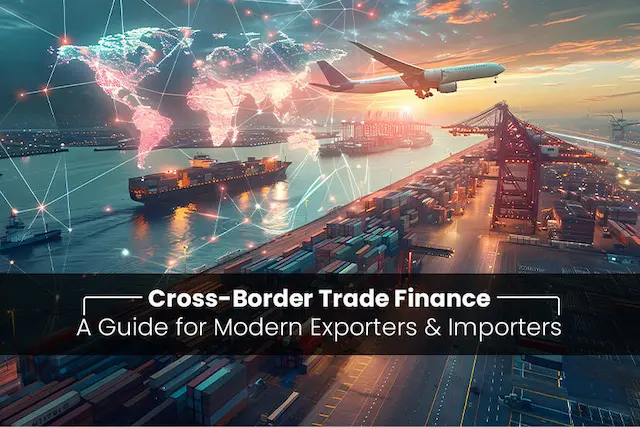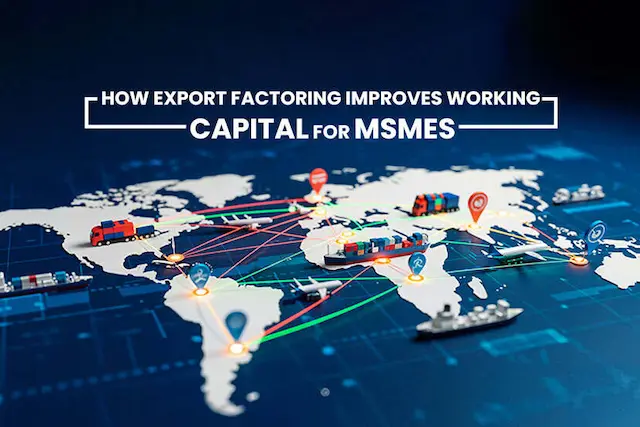Hey everyone, ready to share your awesome product with the world? Exporting can open up tons of new opportunities, but the first step is crucial: choosing the right market for your export product.
No need to worry; we’re here to guide you through this exciting journey.
In this simple guide, we’ll walk you through the basics of choosing the perfect market for your export product. Whether you’re a newbie to exporting or just dipping your toes into the international scene, understanding the key things can make a big difference. So, let’s kick things off and discover how to make your product a hit in the vast, wide world!
Why Should You Tap The Right Market For Exporting Goods?
Choosing the right market for exporting goods is a critical decision that can significantly impact the success of your business. Here’s why tapping into the right market is crucial:
Maximizing Sales Potential: Identifying a market with high demand for your product ensures that you can maximize your sales potential. It’s about offering something that people in that market actually want or need.
Understanding Cultural Preferences: Different markets have diverse cultural preferences and buying behaviors. By choosing the right market, you can tailor your product, marketing strategies, and customer engagement to align with the local culture, increasing the likelihood of success.
Adapting to Regulatory Requirements: Each market comes with its own set of regulations and compliance standards. Tapping into the right market means understanding and adapting to these requirements, ensuring a smooth and legal entry into the market.
Optimizing Logistics and Distribution: Selecting a market strategically allows you to optimize your supply chain, logistics, and distribution channels. This efficiency can lead to cost savings and quicker delivery times, enhancing customer satisfaction.
Managing Currency and Pricing: Currency fluctuations and pricing strategies vary across markets. Choosing the right market allows you to manage these aspects effectively, ensuring competitive pricing and protecting your profit margins.
Building Strong Partnerships: Successful exporting often involves building strong partnerships with local distributors, retailers, or business partners. Targeting the right market enables you to establish mutually beneficial relationships that contribute to long-term success.
Mitigating Risks: Different markets come with different levels of economic and political stability. By carefully selecting a market, you can mitigate risks associated with economic downturns, political instability, or other external factors.
Staying Competitive: Understanding the competitive landscape of a specific market helps you position your product effectively. It allows you to differentiate your offering, identify unique selling points, and stay competitive in the global marketplace.
Optimizing Marketing Efforts: Tailoring your marketing efforts to a specific market ensures that your message resonates with the target audience. This can lead to more effective marketing campaigns, increased brand awareness, and a higher likelihood of customer engagement.
Facilitating Sustainable Growth: Choosing the right market sets the foundation for sustainable growth. It allows you to establish a strong presence, adapt to market dynamics, and expand strategically, paving the way for long-term success in international trade.
In essence, tapping into the right market is not just about selling products; it’s about creating a strategic and sustainable approach to global expansion. It involves thorough research, understanding market dynamics, and aligning your business goals with the unique opportunities presented by each market.
Factors for Choosing the Right Market for Your Export Product
Here are some of the main factors that you should consider while choosing the right market for your export product:
Good Research
Embarking on a successful exporting journey begins with a crucial step: market research. Dive into the intricacies of various regions, understanding the unique preferences, needs, and cultural nuances of different populations. This exploration extends beyond mere product offerings, delving into the economic landscape, cultural intricacies, and legal frameworks of potential markets.
To pinpoint the ideal market for your product, leverage a toolkit of research methodologies. Online surveys, customer interactions, and market reports serve as invaluable resources, offering insights into the demand for your products in different locations. These tools facilitate the gathering of essential data, allowing you to align your offerings with the specific desires of diverse consumer bases.
Harness the power of advanced tools like Google Trends and SimilarWeb to gauge online interest and website visits related to your products. These platforms provide real-time data on consumer behavior, helping you make informed decisions about market viability. By investing time and effort into comprehensive market research, you lay the foundation for a successful export strategy, ensuring that your products resonate with and meet the needs of consumers in your chosen market.
Selecting the Country
The second step in exporting your product involves choosing the right country from a pool of over 200 options. This decision hinges on thorough market research and understanding the demand for your specific product.
For instance, if you’re exporting from India, consider countries with existing multilateral or bilateral trade agreements. India, with agreements in place with over 70 countries or groups, provides a more focused selection for exporters.
Evaluate potential markets based on trade agreements, ensuring a smoother export process and potentially benefiting from favorable trade conditions. By aligning your choice with demand and established trade partnerships, you lay the groundwork for a successful export venture, increasing the likelihood of your product finding a receptive audience in the chosen country.
Strategic Exporting
Achieving success in your export business involves targeting areas where local producers struggle to meet consumer demands. When your product fills a gap in the market, your export venture gains strength. Identify regions with a demand for your product, understanding peak seasons and popular trends. Collaborate with local sellers who possess market insights, ensuring your product aligns with consumer preferences.
Utilize online platforms for sales, ensuring your product stands out. Promote through advertisements, explore variations, and adhere to local regulations. Foster relationships with local businesses, listen to customer feedback, and remain flexible to adapt to evolving preferences. Regularly assess performance, adjust strategies as necessary, and stay attuned to consumer desires. This proactive approach is key to cultivating a successful export business that resonates with the needs and wants of the target market.
The Right Price
Determining the right price for your product in a foreign market is a critical element in the export process. Striking a balance between fairness and competitiveness is essential. Consider both the demand for your product and what customers are willing to pay.
Pricing involves more than just the selling price; factors like sales volume, distance, logistics, tariffs, and additional costs play a role. Be mindful of your competitors’ pricing, as it can impact the profitability of your export venture.
Achieving the right pricing balance is crucial for success, ensuring your product is attractive to customers while also sustaining profitability. Keep a keen eye on all contributing factors, adapt as needed, and position your product strategically in the market. This pricing strategy is fundamental to a successful and sustainable export business.
Checking Politics and Economy
Ensuring safe exports involves a careful look at the political and economic landscape of a new market. Before venturing into a new place, it’s crucial to understand the rules, safety standards, and environmental laws to avoid potential issues for your business.
Unpredictable politics, unclear rules, or economic challenges in a location may pose risks to your export venture in the long run. It’s akin to checking the road conditions before embarking on a journey; you aim for a smooth ride, not a bumpy one.
Prioritize markets with stable political environments, clear regulations, and sound economic conditions to safeguard your business interests and promote a secure and successful export experience.
Competitive Insight
In any market, you’re likely to encounter competitors selling similar products, potentially leading to a crowded and competitive landscape. The presence of numerous competitors can impact your market share and potential earnings. Additionally, if others are already offering similar products, being the first in that market becomes a missed opportunity. Understanding the extent of your competitors’ presence in the market is crucial. It’s akin to knowing your fellow racers before stepping onto the track.
Conduct a thorough analysis of your competitors, gauging their market share and global reach. Determine where else in the world they operate to comprehend the competitive landscape comprehensively. This insight allows you to strategize effectively, identifying areas where you can differentiate your product or enter untapped markets.
By being aware of your competition, you position your export business strategically, enhancing your chances of success in a competitive global market. Like a well-prepared racer, understanding your competitors before entering the race is key to navigating the twists and turns of international trade successfully.
Efficient Exports
Mastering the intricacies of logistics and shipping costs is a game-changer in the world of exports. Choosing the right markets involves understanding how to efficiently transport your goods from one place to another without incurring exorbitant expenses. It all boils down to a simple equation: the destination of your products and the distance they need to cover significantly impact the logistics game.
Begin by exploring various transportation methods – air, sea, or road, each with its own cost and speed considerations. Visualize the destination your products are destined for; locations with well-developed ports and smooth transportation infrastructure tend to offer cost-effective and quicker journeys.
However, it’s crucial to navigate potential hurdles like taxes and fees in your export destinations. Some countries impose additional costs that can impact your overall profitability. By carefully assessing transportation options, leveraging efficient routes, and factoring in destination-specific costs, you can streamline your export process, ensuring a smooth and cost-effective journey for your goods. This strategic approach to logistics and shipping is instrumental in maximizing profits and establishing a successful global export venture.
Government Incentives
In the realm of exports, governments often lend support to specific products to address shortages. For instance, in India, the Merchandise Exports from India Scheme (MEIS) serves as a boost for particular goods in targeted markets. These government incentives act as a supportive hand, fostering business growth in specific sectors.
To fully capitalize on these opportunities, businesses need to comprehend the intricacies of such programs, adhere to established rules, and align their export strategies accordingly. It goes beyond mere selling; leveraging government support is about strategically navigating your entry into specific markets, ensuring a smoother and more rewarding journey. By embracing these incentives, businesses can not only contribute to addressing shortages but also enhance their export endeavors, capitalizing on the support provided by government initiatives.
Export Decisions: 7 Key Pointers

Here are 7 warning signs to take into consideration:
Beyond Numbers: While data is valuable, confidence in your product is often the ultimate decider in export choices.
Consider Local Costs: Identify and account for all local expenses before finalizing your market choice, as these costs will be incurred regardless of the destination.
Start Small: For beginners, resist the urge to ship to numerous countries. Begin with a few markets, gaining experience before expanding geographically.
Confidence Over Numbers: In export decisions, product confidence can outweigh numerical evidence.
Account for Local Expenses: Don’t overlook local costs when choosing your market; they are unavoidable expenses.
Gradual Expansion: Start your export journey with a couple of markets and gradually expand from there, avoiding overwhelm.
Strategic Growth: Prioritize strategic growth over rapid expansion, ensuring a sustainable and manageable approach to exporting.
Final Words
Embarking on a successful export journey requires careful consideration and strategic decisions. By tapping into the right market, businesses can maximize sales potential, adapt to cultural preferences, and navigate regulatory landscapes effectively. Through comprehensive research, understanding country-specific factors, and leveraging government incentives, businesses can establish a strong foundation for sustainable growth.
However, it’s crucial to heed warning signs, emphasizing confidence over numbers, accounting for local costs, and adopting a gradual and strategic expansion approach. Ultimately, the key lies in a well-informed, adaptive, and gradual approach to international trade, ensuring a successful and enduring presence in the global marketplace.
Also Read : The Role of Export Factoring in Improving Cash Flow for Exporters




